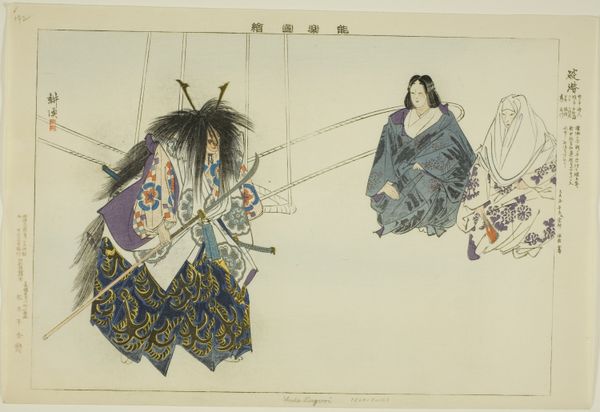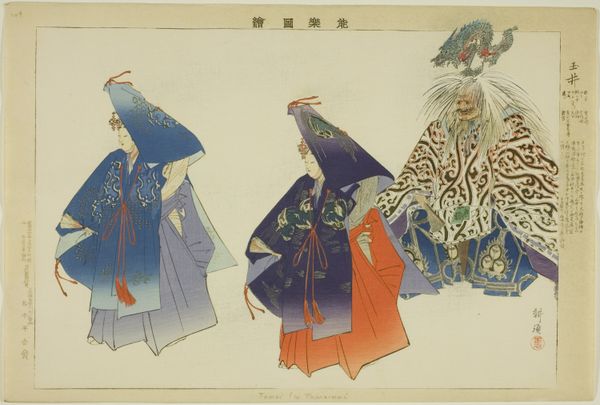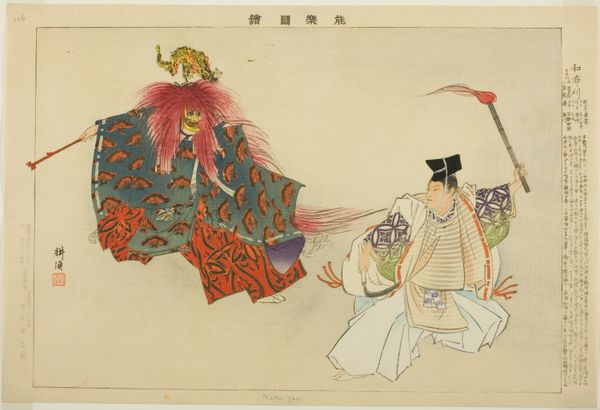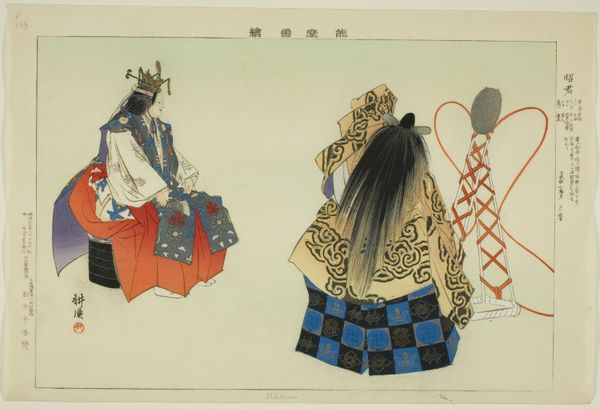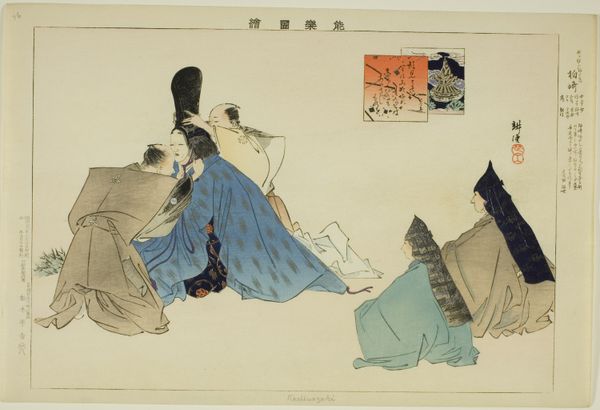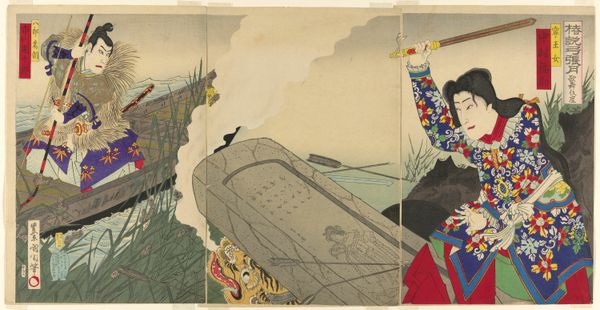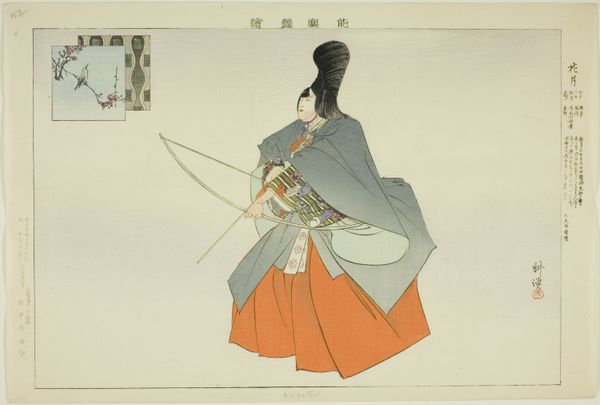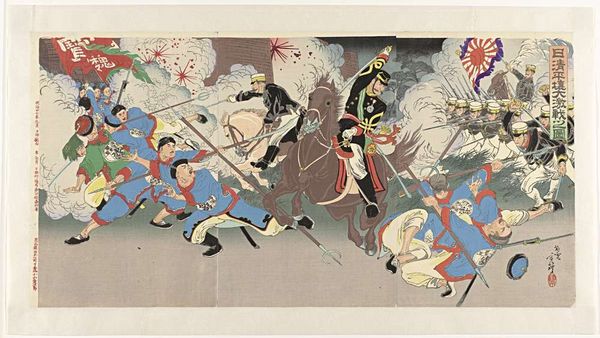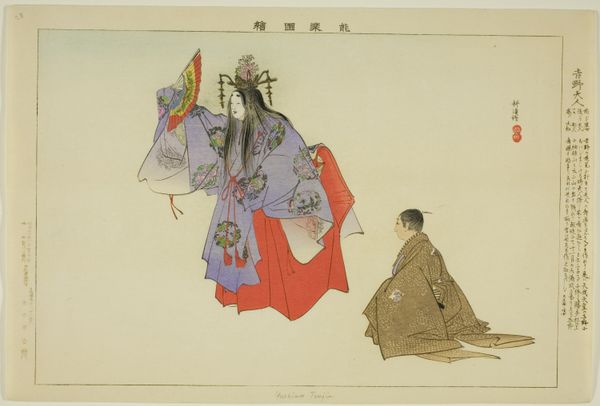
Ryuko, from the series "Pictures of No Performances (Nogaku Zue)" 1898
0:00
0:00
Dimensions: Approx. 25.2 × 37.4 cm (10 × 14 4/3 in.)
Copyright: Public Domain
This is "Ryuko" a woodblock print from the series "Pictures of No Performances" by Tsukioka Kôgyo, created around the turn of the 20th century. The print depicts a scene from the Noh play "Ryuko," featuring symbolic elements deeply rooted in Japanese culture. Notice the striking figure with the long white hair, a visual marker of supernatural or aged characters, often seen in Noh theatre to represent spirits or demons. Similar motifs appear across cultures, consider the wild men of medieval Europe, or the ancient Greek Silenus. They are all figures embodying primal, untamed aspects of the human psyche. Here, the tiger is a crucial symbol, representing power and ferocity but also protection. Like the lion in Western art, the tiger embodies both strength and guardianship. The appearance of such figures throughout time shows the enduring power of archetypes. These enduring motifs speak to our deepest fears and desires. The recurring motifs and gestures in art across different cultures serve as a reminder of the collective unconscious, continuously shaping and reshaping our cultural narratives.
Comments
No comments
Be the first to comment and join the conversation on the ultimate creative platform.
